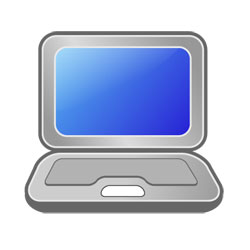If you thought sci-fi movies are a little far-fetched, you’ll find that in reality, nothing is. They say that fact is stranger than fiction, and the idea of cognitive computing certainly solidifies this old saying. Ever thought of a computer that could think like you?
Some may say that the technological revolution has already reached its peak. What they mean to say is that gadgets nowadays are so advanced, that anything beyond this would have to be completely path breaking.
That’s where cognitive computing raises its hand. Like the smartest kid in class, it will be able to think just like a human, thus revolutionizing computing as we know it. What it really means is building computer systems that are robust and so versatile that they can be compared to a human’s brain and nervous system.
What the brain does
The human brain weighs less than 3 pounds and yet it has powerful functions unrivalled by any mechanical device. Memory and processing power go hand in hand and yet the brain uses lesser power than what a light bulb requires.
It reacts differently in various situations and can handle pattern recognition with ease. Basically, the human brain is so wonderful that it can do things that computers have not even come close to trying. However, that’s about to change…very soon.
What IBM is up to?
Scientists at an IBM research center have a major project on their hands. They have been trying to reverse engineer a macaque brain in order to create one by themselves. That itself should tell you that they’re extremely serious about creating a computer with a ‘brain’.
 The current brain of a computer runs by a clock. When you enter a command, it knows exactly what needs to be done next. Memory and processing functions are carried out separately. This is impressive, but nothing fancy when compared to a real brain.
The current brain of a computer runs by a clock. When you enter a command, it knows exactly what needs to be done next. Memory and processing functions are carried out separately. This is impressive, but nothing fancy when compared to a real brain.
The IBM researchers created a wiring diagram that has 1 billion neurons. The brain actually has 22 million neurons. However, this took place way back in 2009. One can only imagine the strides that have been taken since then.
Anyway, the machine they created was unlike any other out there. There is no programming involved and the machine learns and retains tasks just like a normal human being. Operations are event driven, as well.
Computers with the 5 senses
IBM has predicted that in five year’s time, computers will be able to see, hear, taste, smell and touch just like humans. A tall claim, you say? With the rise of cognitive computing, there is no saying what can be achieved.
What sets computers today apart from a cognitive one?
The biggest difference is: response. When you type in a query, a computer has a set number of answers it can bring up. Once it exhausts all its options, you’re stuck at that point. On the other hand a cognitive computer observes and learns to approach the problem from different angles. This is exactly how humans react when a solution can’t be found.
The line between cognition and intelligence
Cognitive computing doesn’t imply that the machine can take over your life, just like in those sci-fi novels and movies. The technological world still has a long way to go in this particular arena.
This cutting-edge technology needs to be deployed and just cannot function of its own free will. What it can do is provide the user with answers that are much more detailed and accurate. Think of it as ultra-assistive computing.
IBM is one the few companies that has been conducting a lot of research in this field. It will be interesting to see how cognitive computing makes an entry into our everyday world.

